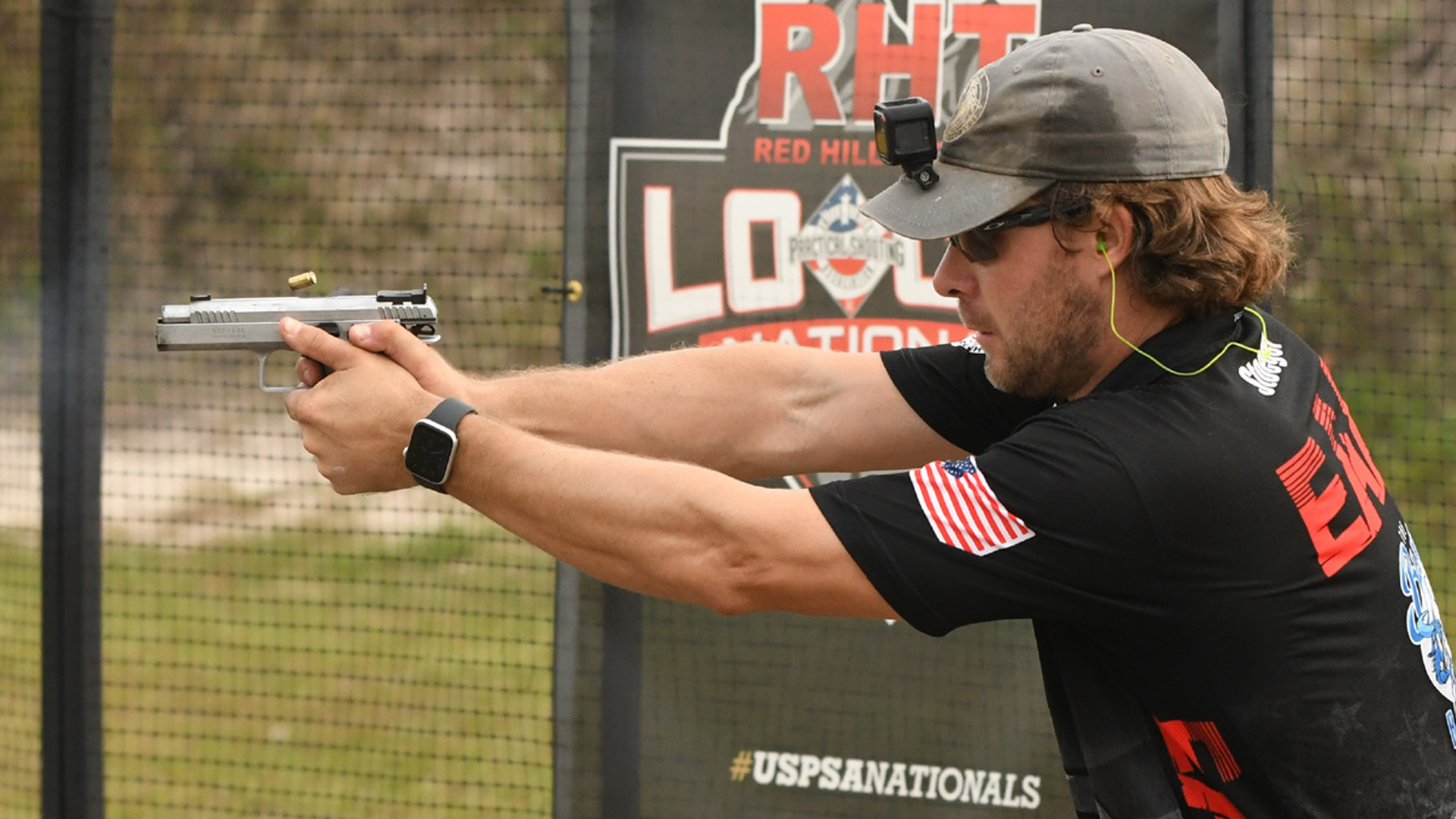
It looks like 2021 is going to be a year where we will have a bit of an ammunition drought. Both ammunition and components have become tough to find—and even as the supply starts to come back, people will still likely buy and store all the components they can find. The end result of this situation is that most of us are going to end up shooting a lot less this year.

Most people will attend the same matches they planned on attending. Most of us want to compete. The lack of ammunition may not mean fewer matches—but it will certainly mean less practice.
Having less practice ammunition doesn’t mean that you can’t improve. It just means you need to do some dry-fire. The reality is that dry-fire training can take you as far as you want to go. Many of us have used dry-fire as our primary training tool for years. Shooting live ammunition comes second to doing dry-fire a little bit every day.
If you want to get better and you are hurting from the ammunition shortage, remember that dry-fire is the way that you are going to move up.
I spend a lot of time reviewing training footage from all sorts of people. A couple of friends and I work as instructors at Practical Shooting Training Group. People submit footage of their dry-fire (among other things) and we review it. I have identified some of the most common errors; I hope you will take the time to check yourself in dry-fire to reduce these errors in your own shooting.
The most common advice given about dry-fire is to be honest with yourself. It might even be better to say “observant.” Most people simply don’t hold themselves to a standard when it comes to sight pictures and grip pressure. They rush through target arrays without getting proper sight pictures. Most people hold the gun too loosely when they dry-fire. Again, that is most people. They just aren’t realistic about how they hold the gun when they shoot live ammunition.
Right along with training your hands to do what you want them to do, you need to train your eyes. One of the most common mistakes in dry-fire is following the sight itself with your eyes. Your sight should actually be following your eyes. Your eyes need to jump out to the target. More than that, they need to jump out to a precise spot on the target in order to guide your gun to where to point. It should work just like a mouse pointer. You look at the icon you want to click on and then the pointer appears.
As you are doing your dry-fire training, remember to move. If you have the space, it is critical to build movement into your dry-fire. Think about it—how many stages do you shoot standing still? Maybe one or two in a club match? Most of your shooting is while you are moving around. Your dry-fire training should reflect that. You can observe the way the sights bounce as you move around and really refine your movement technique.
If you implement these dry-fire tips properly, you will improve. All it takes is regular dry-fire training where you pay attention to specific points and you can build positive habits into your shooting. These habits translate into better rankings at your matches.
Distance Changeup
Procedure: Start with your hands relaxed at sides or wrists above shoulders, facing downrange. Engage each target with two rounds.
Alternate your engagement order every few repetitions. Left to right, right to left, open targets then the head box, and head box then open targets are all options you should work with.
Focus: Work on switching between different sight focal points.
Goal: A 2.3-second par time.
Commentary: This drill absolutely relies on your own live-fire training. You need to know what your sights need to look like to hit the head shot. You need to know how carefully you must break the trigger. You also need to know what you can get away with on the open targets. Can you get “A” zone hits by shooting target-focused? Do you just use your fiber dot? These are individual questions that you need to answer for yourself through experimentation on the range.
Once you have an idea of what you need to do, you can train yourself to do those things every single time in dry-fire. You can develop the discipline to get a sharp front sight focus on the head box. For example, you can force yourself to push into the open targets using target focus.
The key to this drill is to develop the discipline you need to dial back and nail the tight shots every single time. You see that sort of challenge in matches frequently. You don’t ever want to pick up a miss just because the target is a little bit tougher than the other targets on the stage.
Article from the March/April 2021 issue of USPSA’s magazine Lead photo by John B. Holbrook, II.
Read more: Top USPSA Production Handguns In 2020


































